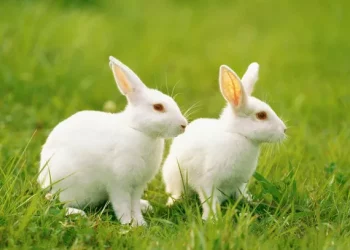Recognizing Rabbit Labor Signs
Rabbits are known for their secretive nature, especially when it comes to birthing. However, as responsible rabbit owners, it’s crucial to understand the signs that indicate a rabbit is in labor. Recognizing these signs can help ensure a smooth and safe delivery for both the mother and her offspring.
One of the first signs of impending labor is restlessness. You may notice your rabbit pacing or digging in her cage more frequently as she prepares for birth. Additionally, she may emit low grunting sounds or even exhibit nesting behavior, such as pulling fur from her body to line her nest. These behaviors typically indicate that labor is imminent, and it’s essential to monitor your rabbit closely during this time.
Creating a Comfortable Nesting Area
Providing a comfortable and safe nesting area is essential for supporting your rabbit during labor. Set up a quiet, secluded space where she can give birth without disturbance. This area should be lined with soft bedding, such as hay or shredded paper, to keep the newborn kits warm and cozy.
Consider using a nesting box or an enclosed space to give your rabbit a sense of security during labor. A nesting box should be large enough for the mother to stretch out comfortably but snug enough to provide a sense of enclosure. Make sure the nesting area is kept clean and dry to prevent any potential infections.
Maintaining warmth is crucial for the health and well-being of both the mother and her kits. Ensure the nesting area is kept at a consistent temperature, ideally between 65°F and 75°F (18°C to 24°C). You can achieve this by providing additional bedding or using a heat lamp, but be cautious not to overheat the area, as this can be harmful to the rabbits.
Supporting the Mother Rabbit
Creating a calm and stress-free environment is essential for helping your rabbit through labor. Minimize any loud noises or sudden movements that may cause her distress. Spend time with your rabbit, offering gentle reassurance and comfort as she prepares to give birth.
See Also:How Do I Get My Rabbit to Eat?
To aid in stimulating contractions, you can gently massage the rabbit’s abdomen. Using circular motions, apply light pressure to the area to encourage the progression of labor. However, be cautious not to apply too much pressure, as this can cause discomfort or injury to the rabbit.
During labor, it’s crucial to provide your rabbit with fresh water and a balanced diet to support her energy levels and milk production. Offer plenty of hay, fresh vegetables, and a small amount of pelleted rabbit food to ensure she receives the necessary nutrients.
Monitoring the Birthing Process
Understanding the stages of labor can help you anticipate what to expect during the birthing process. The first stage typically involves the mother becoming restless and exhibiting nesting behavior. This is followed by active labor, during which she may appear to strain or push as she delivers the kits.
Once the kits are born, the mother will instinctively clean them and help them adjust to their new environment. Avoid disturbing the kits during this critical bonding period, as interference may disrupt the mother’s maternal instincts and hinder the bonding process.
Monitor the mother rabbit closely as she cares for her newborns, ensuring that all kits are nursing and receiving adequate attention. If you notice any signs of distress or if a kit appears weak or unresponsive, contact a veterinarian immediately for assistance.
Seeking Veterinary Assistance
While most rabbit births proceed smoothly without complications, it’s essential to be prepared for any potential issues that may arise. If your rabbit experiences prolonged labor or shows signs of distress, such as refusal to eat or shivering, it’s crucial to seek professional help promptly.
A veterinarian experienced in rabbit care can provide valuable assistance and guidance during labor. They can assess the situation and provide appropriate medical intervention if necessary, ensuring the health and safety of both the mother and her kits.
In conclusion, assisting your rabbit through labor requires careful observation, preparation, and support. By recognizing the signs of labor, creating a comfortable nesting area, supporting the mother rabbit, monitoring the birthing process, and seeking veterinary assistance when needed, you can help ensure a safe and successful delivery for your rabbit and her offspring.
Related Topics:
























